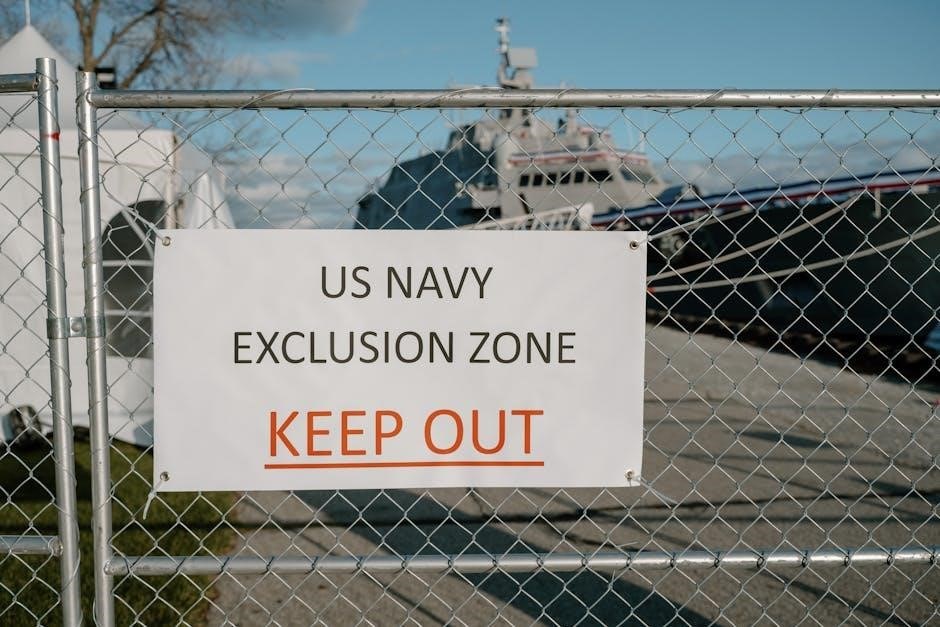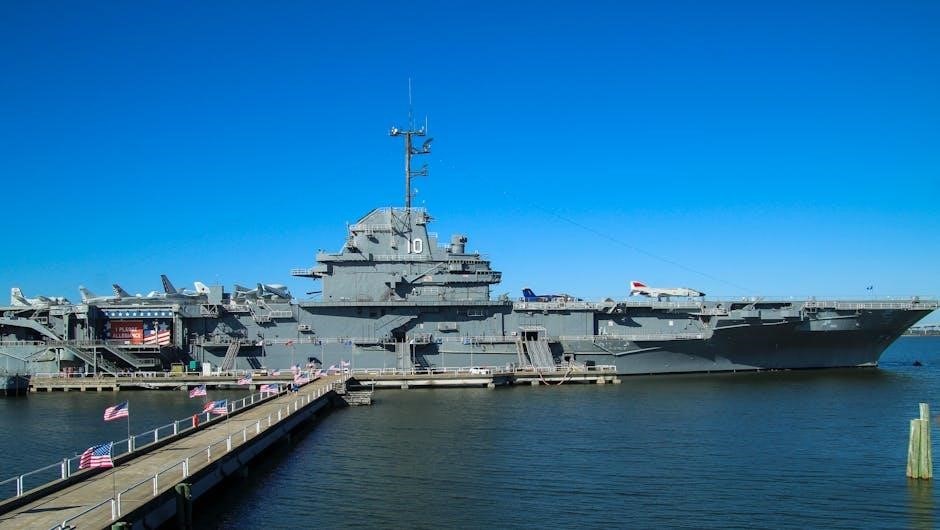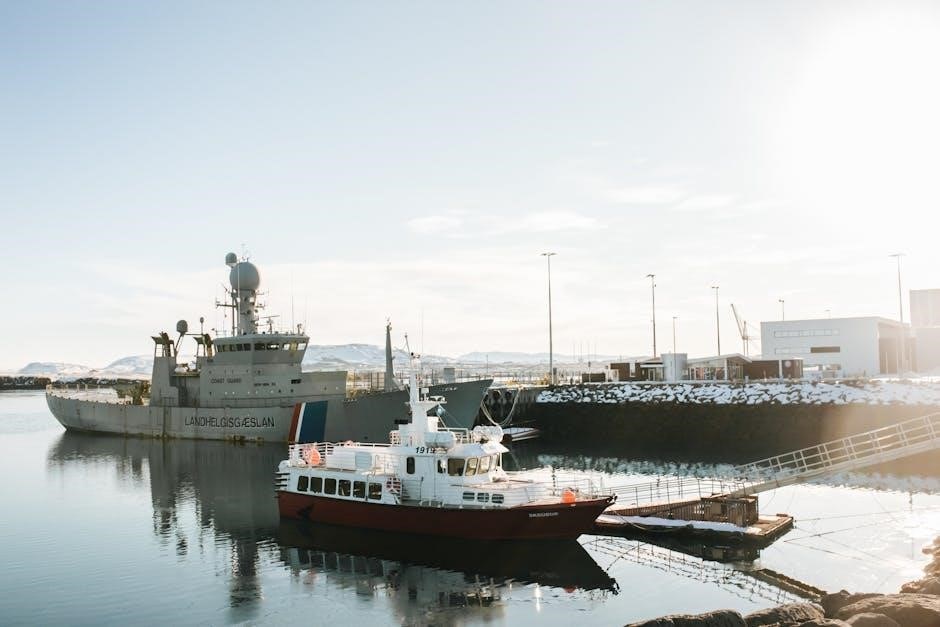The US Navy sealift ships play a crucial role in supporting military operations, with a fleet of approximately 130 ships, including oilers, special mission ships, and combat logistics force, as listed in the Military Sealift Command ships document available as a pdf file online․
Overview of Military Sealift Command
The Military Sealift Command is an organization that controls the replenishment and military transport ships of the United States Navy, providing sealift and ocean transportation for all US military services as well as for other government agencies․ The command first came into existence on 9 July 1949 when the Military Sea Transportation Service was established․ The Military Sealift Command has the responsibility for providing sealift and ocean transportation, and it operates a fleet of approximately 130 ships in eight programs․ The command is responsible for the effective and efficient operation of its ships, which are used to support military operations and provide humanitarian assistance․ The Military Sealift Command ships document, available as a pdf file online, provides a list of the ships in the fleet, including their classifications, lengths, beams, displacements, and names․ The command plays a critical role in supporting the US military and its operations around the world․ The organization is committed to providing the best possible service to its customers, and it continues to evolve and improve its operations to meet the changing needs of the US military․ The Military Sealift Command is an important part of the US Navy and plays a vital role in supporting national security․

Types of US Navy Sealift Ships
US Navy sealift ships include fleet oilers, special mission ships, and combat logistics force, as listed in the Military Sealift Command ships document available online as a pdf file for reference purposes only․
Fleet Oiler and Special Mission Ships
The US Navy sealift ships include fleet oilers and special mission ships that provide critical support to naval operations․ These ships are designed to replenish fuel and supplies to naval vessels at sea, extending their range and endurance․ The fleet oilers are equipped with cargo tanks and pumping systems to transfer fuel to other ships, while special mission ships are configured to support specific mission requirements․ According to the Military Sealift Command ships document available as a pdf file, these ships play a vital role in sustaining naval operations and ensuring the effectiveness of the fleet․ The document provides detailed information on the specifications and capabilities of these ships, including their length, beam, and displacement․ The fleet oilers and special mission ships are an essential component of the US Navy’s sealift capability, enabling the navy to project power and maintain a presence in areas of operation․ They are operated by the Military Sealift Command and are an important part of the navy’s logistics support system․

Strategic Sealift and Combat Logistics Force
Strategic sealift and combat logistics force are critical components of US Navy sealift ships, providing support and supplies to naval vessels and troops, as listed in the Military Sealift Command ships pdf document online always․
Strategic Sealift Program
The Strategic Sealift Program is a vital component of the US Navy’s sealift capabilities, providing the necessary transportation and logistics support to ensure the rapid deployment of military forces and equipment․ The program is designed to provide a surge sealift capacity, allowing the US Navy to respond quickly to emerging crises and support large-scale military operations․ According to the Military Sealift Command ships pdf document, the Strategic Sealift Program includes a fleet of ships that are capable of transporting a wide range of cargo, including vehicles, equipment, and supplies․ These ships are operated by the Military Sealift Command and are an essential part of the US Navy’s sealift fleet․ The program is continuously evolving to meet the changing needs of the US military, with a focus on improving efficiency, reducing costs, and enhancing operational effectiveness․ The Strategic Sealift Program plays a critical role in supporting US military operations around the world․
Combat Logistics Force
The Combat Logistics Force is a critical component of the US Navy’s sealift capabilities, providing the necessary logistics support to ensure the success of military operations․ According to the Military Sealift Command ships pdf document, the Combat Logistics Force includes a fleet of ships that are designed to provide underway replenishment of fuel, ammunition, and supplies to US Navy ships at sea․ These ships are operated by the Military Sealift Command and are an essential part of the US Navy’s ability to project power and sustain military operations over extended periods․ The Combat Logistics Force plays a vital role in supporting the US Navy’s carrier strike groups, amphibious ready groups, and other naval forces․ The force is responsible for delivering critical supplies and equipment to ships at sea, allowing them to remain on station and continue to conduct operations․ The Combat Logistics Force is a key enabler of the US Navy’s global operations․

Sealift Ships and Their Classifications
Sealift ships are categorized into various classes, including fleet oilers and special mission ships, as outlined in the Military Sealift Command ships pdf document online for reference purposes only always․
US Navy Sealift Ships Classification
The US Navy sealift ships are classified into several categories, including fleet oilers, special mission ships, and combat logistics force ships, as listed in the Military Sealift Command ships document available online․
The classification of these ships is based on their functions and capabilities, with each category playing a crucial role in supporting military operations․
The fleet oilers, for example, are responsible for providing fuel and supplies to naval vessels, while the special mission ships are designed to carry out specific tasks such as mine countermeasures and cable laying․
The combat logistics force ships, on the other hand, are equipped to provide logistics support to naval and marine forces during combat operations․
The classification of US Navy sealift ships is an important aspect of their operations, as it enables the effective allocation of resources and the efficient execution of military missions․
The Military Sealift Command ships pdf document provides a detailed overview of the classification of US Navy sealift ships, including their characteristics, capabilities, and roles․
This information is essential for understanding the complexities of naval operations and the importance of sealift ships in supporting military activities․
The classification of US Navy sealift ships is a critical component of their overall mission to provide logistics support to naval and marine forces․

Current US Navy Sealift Ships
The US Navy operates approximately 130 sealift ships, including commissioned warships and support components, as listed in the Military Sealift Command ships document available online as a pdf file for reference purposes only․
Commissioned Warships and Support Component
The commissioned warships and support component of the US Navy sealift ships play a vital role in maintaining the fleet’s operational readiness․ These ships are operated by the Military Sealift Command and are responsible for providing logistics support to the Navy’s combat ships․ The support component includes a range of ships, such as tankers, freighters, and hospital ships, which provide critical supplies and services to the fleet․ The commissioned warships, on the other hand, are manned by Navy personnel and are responsible for providing command and control, as well as communications and navigation support․ The US Navy sealift ships document, available as a pdf file online, provides a comprehensive list of the commissioned warships and support component, including their classifications, lengths, beams, and displacements․ This information is essential for understanding the capabilities and limitations of the US Navy’s sealift ships․ The document also provides information on the ships’ propulsion systems, cargo capacities, and crew sizes․
